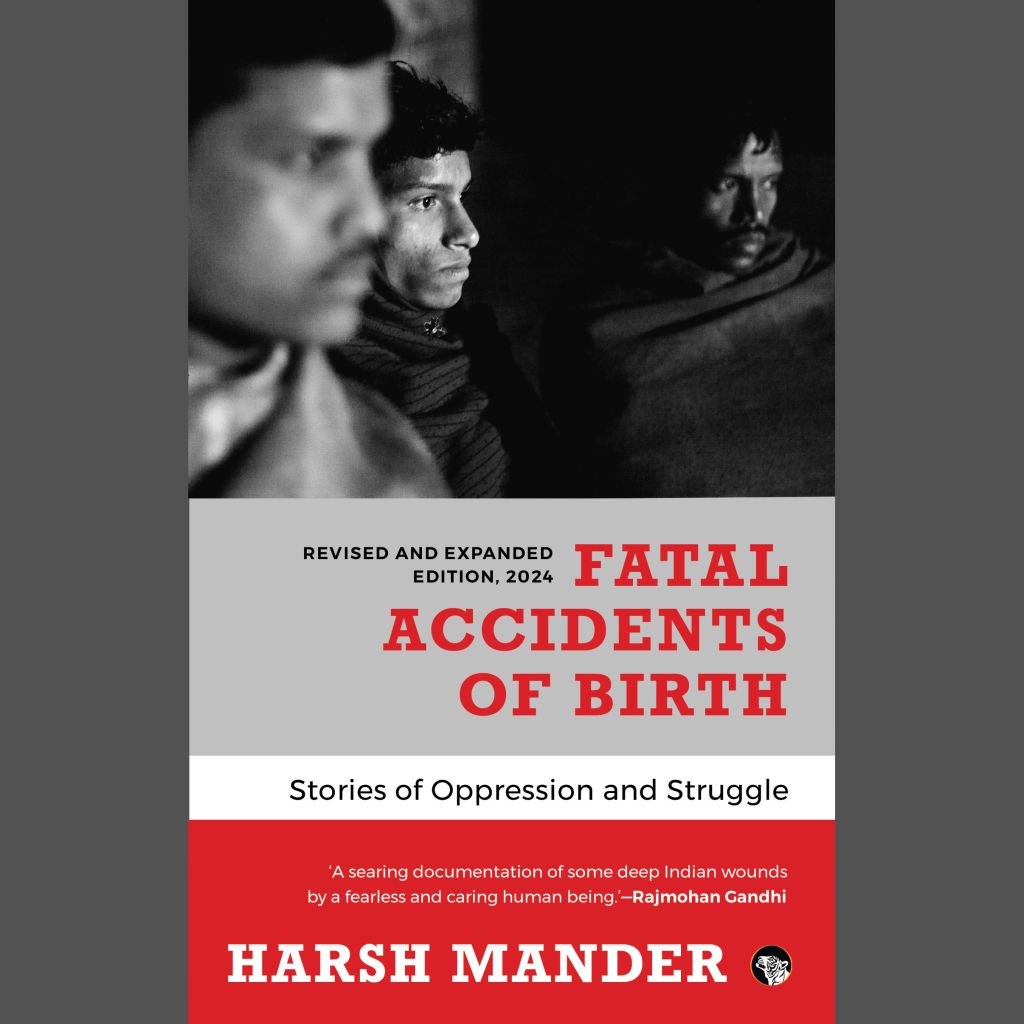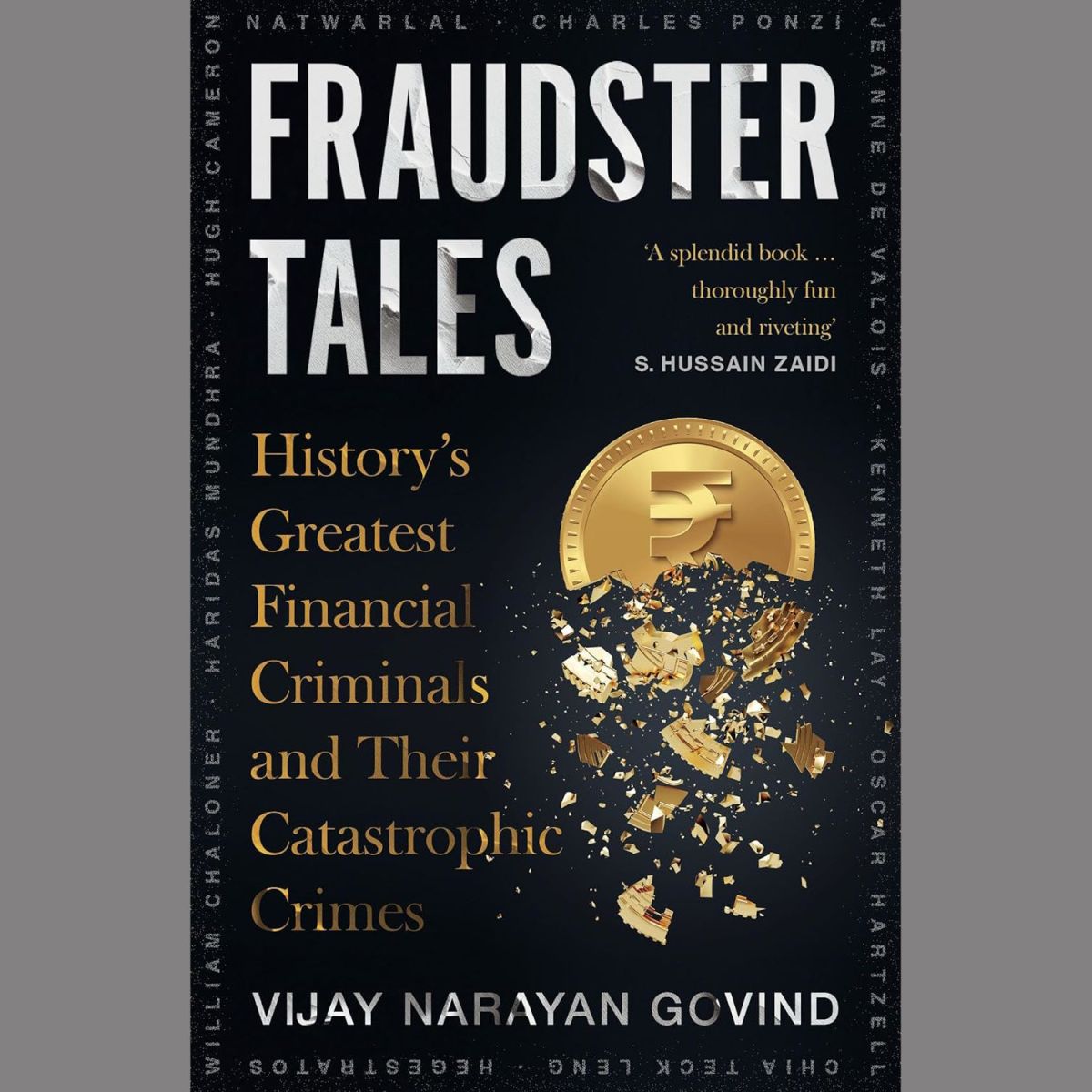In the revised, 2024 edition of Fatal Accidents of Birth, author Harsh Mander presents a harrowing selection of stories of oppression and struggle. ‘This volume collects twenty-one stories of women and men who, simply because they were born poor, or a particular gender, or into a certain caste or religion, fell prey to the many atrocities and indignities endemic to contemporary India. Some resisted, survived, and soldier on. Some did not,’ says the publisher’s note. ‘This is a powerful, challenging book. It tells us of the many ways in which we inflict violence upon each other—most of all by simply choosing to not see. And as it does so, this necessary book ensures that these stories will find their rightful place in our consciousness,’ it adds.
About the stories he’s written in the book – stories of discrimination, violence, social ostracization and abandonment, the systemic stripping of individual dignity, hunger and homelessness – Mander says that while some of these stories may seem unimaginable, they are all true nevertheless. And that while these may not be his story – or indeed yours – these are stories we must read. And pay heed to the lessons they have for all of us. ‘These are bleak, harrowing stories, but also stories of resistance and dignity. Far better than my telling these tales would have been for you to have heard them directly from the people whose lives these are. I hope you will be able to do that one day, not too distant,’ says Mander, who is the Director of the Centre for Equity Studies and who’s one of India’s most courageous social justice and human rights activists.
With the publisher’s permission, here is an excerpt from Fatal Accidents of Birth
Kavita Shrivastava, human rights activist working for the People’s Union for Civil Liberties, and my friend, is a one-point stop for people who suffer a bewildering array of injustices in Rajasthan. Of the people who sought her help, one of the most striking stories was that of a Dalit man, Krishan Gopal, who fought a spirited, even obsessive, battle for well over a decade. His stubborn, solitary struggle was to establish his right to worship his beloved deity, Hanuman. He died, unsuccessful in an endeavour that dominated the last years of his life. His was a crusade that resulted in the boycott and long exile of his family from the village to the pavements of Jaipur. This is his story, as narrated to me by his son Bhanwar Lal.
There is an old temple dedicated to Thakurji near the village square in Nimoda, Rajasthan. Bhanwar Lal recalled that his father Krishan Gopal often went to worship there. As a Dalit, he complied without complaint with the ancient rules which barred his entry into the actual temple, although he often lingered near its threshold, his hands reverentially folded, and lit incense for the god he loved so much but could never touch. One morning, some upper-caste Brahmin and Bania youths aggressively blocked his path to the doors of the temple and threatened him with dire consequences if he was seen even at the temple gates. They taunted him, ‘What business do low-caste people like you have in our temple?’
It is difficult to know, Bhanwar Lal told me when I first spoke to him about his father, exactly what went through Krishan’s mind on that day when he was insulted by the young upper-caste men. Rarely had he seen his father so agitated than when he returned home that day. He remained sullen and wordless for many days. And when he broke his restless silence, his decision stunned the family. ‘I will build my own temple. And this will be a temple to the deity I love the most: Hanuman. It will be bigger and better than anything the people of this village have seen. I’ll see who can stop us from worshipping then.’ A lifetime—generations—of uncomplaining acquiescence to the myriad degradations and humiliations of the caste system had crumbled to dust within him. This decision changed his life and that of his family forever. It led to a spiral of violence, boycott and exile which still haunts his family.
Growing up, Bhanwar Lal said, he was often reminded in many different ways that he was ordained to be somehow lesser and unworthier than most other children in his class. In the school run by the government in Nimoda, Dalit children like him were seated by teachers in the rear of the classroom, at a safe distance from the other students. They could not help themselves to a drink of water from the earthen pot kept outside the school, even on blisteringly hot summer afternoons. The young lad often rebelled against these daily indignities, and many hot arguments would echo in their small stone-and-earth house on the outskirts of the village. ‘They treat us as though we are dirty,’ he would rage indignantly with his father. His father Krishan Gopal would listen in silence, and occasionally counsel patience. But on that fateful day when he was taunted outside the village temple, the roles reversed and it was Krishan Gopal who decided that the meek acquiescence of a lifetime would end. Krishan Gopal had put aside money—earned from hard labour in cities and towns far from home—with which he had planned to buy a small piece of agricultural land for the comfort of his old age and the security of later generations. He abandoned these plans and decided to build a Hanuman temple.
He gathered all his savings but when this was not enough for his new-found ambition, he borrowed an additional twenty thousand rupees from a moneylender at the crippling rate of 2 per cent compound interest per month, which he continued to struggle to repay years later. This added up to sixty-five thousand rupees. He then set out to look for the grandest idol he could find. He found a suitable one in Dausa, an imposing human-sized statue of Hanuman, almost four times taller than the idol of Thakurji in the village temple. He triumphantly transported the idol back to his village in a hired tractor-trailer. No one from among the surprised upper-caste villagers was willing to help unload the statue, and Krishan enlisted the help of his fellow caste men to deliver the god to his unconventional new resting place.
But no worship can commence at a temple until it is sanctified, and the scriptures permit only Brahmin priests to undertake such sacred rituals. No local Brahmin priest would consent to sanctify the disputed temple, for fear of the village upper castes. Krishan was undaunted and set out on a new quest which ended this time in Mathura in Uttar Pradesh. There he found a Brahmin priest who agreed to visit Nimoda and perform the necessary prayers. He did, however, demand a substantially higher dakshina than usual: six thousand rupees. In addition, the priest from Mathura cooked his own food, even brewed his own tea, but charged everything to his Dalit hosts.
The day that Krishan had long awaited finally arrived. The Hanuman temple with its massive idol was to be sanctified, after a recitation of the Ramayan over twenty-four hours. Krishan invited everyone in the village for the consecration ceremony. The programme was, however, boycotted by the entire village, including its Dalit residents. They had been threatened with persecution if they were even seen near the new temple. But more than two thousand Dalits from many districts of Rajasthan gathered, and there was great feasting and celebration. Even a surly volley of stones from the upper-caste section of the village could not dampen the festivities.
After the installation, the villagers enforced a complete boycott on Krishan Gopal’s family. They could not make any purchases from the village shops, they could not take on any casual-wage employment, they could not even use the village handpump. They were jeered when they walked the streets, stones were hurled at the temple, and upper-caste women openly defecated around it even during times of worship. Matters came to a head when all the men and boys of Krishan’s family were thrashed after they rejected the demand of village elders that they demolish the temple and pay a fine of twenty-one thousand rupees.
The entire family fled the village that night and sought protection at the local police station. They were mocked by the police. They then agitated for many weeks at the office of the district collector; soon after, local media, human rights workers as well as Dalit activists sprang to their defence. At this time, they came to know about Kavita and the People’s Union for Civil Liberties of which she was the general secretary. They met her, and she became part of their life. With her support—but not before several months had elapsed—a criminal case was registered against the villagers for practising untouchability and caste atrocities, and the family was provided an armed guard of five policemen to protect them round the clock when they returned to the village. Yet, eventually, the police guard was withdrawn. The villagers had waited impatiently for this moment and resumed their molestation of Krishan’s family.
Finally, three years after he had set out to battle centuries of oppressive caste traditions, Krishan Gopal was broken down and forced to abandon his village with his family for the streets of Jaipur. They were reduced, once again, to seeking wage work where they could and struggled to meet burgeoning medical and food bills.
Fatal Accidents of Birth: Stories of Oppression and Struggle
Author: Harsh Mander
Publisher: Speaking Tiger
Format: Paperback
Number of pages: 272
Price: Rs 381
Available on Amazon









